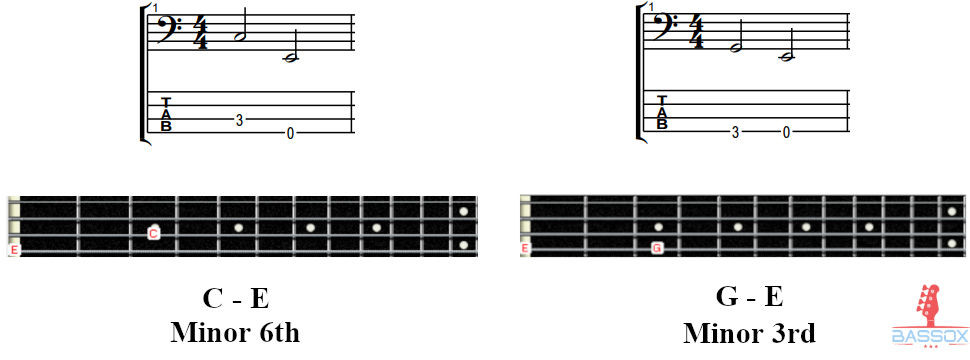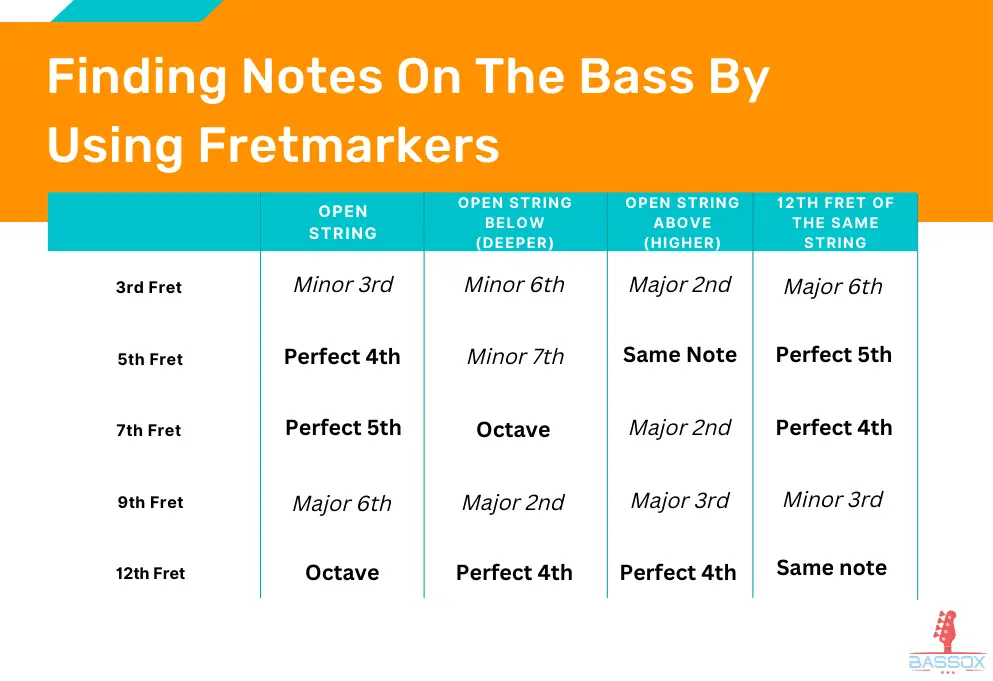The dots on a bass guitar, also known as fret markers, are helpful for bassists of all skill levels. This is because they make it easier to navigate the fretboard, and thus make the bass easier to play overall.
Thus, for anyone unfamiliar with the dots on bass guitars, I`ve made this article to make your life a lot easier.
I`ll start by covering what the dots on a bass guitar mean, and why they are helpful. Then, we will take a look at why the 12th fret has 2 dots on it, and why there are dots on the side of the neck.
Lastly, I`ll show you how to use fret markers to better understand the fretboard, and how to make use of them in real time while playing the bass.
What do the dots on a bass guitar mean?
The purpose of the dots on a bass guitar is to make it easier for bassists to distinguish between frets. Because the dots are always at the same frets, such as the 3rd, 5th, and 7th they are helpful for keeping the fretting hand in the right spot.
Thus, the dot on the 3rd fret is simply there to indicate that this is the 3rd fret. To put it another way, the dots could be replaced with numbers and serve the same purpose.

Another way to approach the question is to look at what notes are found on the different fret markers.
To answer that, there is a table of what note is found at every fret on a bass.
| E-String | A-String | D-String | G-String | |
| 3rd Fret: | G | C | F | A# |
| 5th Fret: | A | D | G | C |
| 7th Fret: | B | E | A | D |
| 9th Fret: | C# | F# | B | E |
| 12th Fret: | E | A | D | G |
| 15th Fret: | G | C | F | A# |
| 17th Fret: | A | D | G | C |
| 19th Fret: | B | E | A | D |
| 21st Fret: | C# | F# | B | E |
| 24th Fret: | E | A | D | G |
While this is a lot to take in at first, learning what notes are found on the fret markers is one of the best ways to memorize the fretboard. There are 3 main reasons for this:
- Adjacent Notes – Fretmarkers never have more than 2 frets in between them. Thus, you can quickly find adjacent notes with their help. For example, you might not know where G# is on the fretboard. However, you might know that A is on the 5th fret of the E string and that G# is just a half step down from A. In that case, you can quickly find G# on the 4th fret of the E string with the help of the fret marker.
- Repeating Pattern – In the table above, the pattern of notes repeats from the 12th fret. Thus, the 15th fret is the same as the 3rd, the 17th is the same as the 5th, etc. Thus, you only need to memorize the 3rd, 5th, 7th, and 9th frets to know what note is found on every fret marker.
- Intuitiveness – The fretboard works in patterns. Thus, when you memorize what note is found on a fret of a particular string, this will in time make it easier to remember other notes in the future. This also translates to all basses, regardless of how many frets the bass has.
Why are there 2 dots on the 12th fret?
The 2 dots on the 12th fret indicate that it is an octave. This means that playing an open string followed by the 12th fret results in the same note at a higher pitch. As a result, the pattern of the fretboard starts repeating at the octave, and it is thus highlighted with 2 dots to distinguish it from other frets.
The 12-steps that make up every diatonic scale repeat when it reaches the octave.
This is best demonstrated on a keyboard, where the pattern of the black and white keys restarts at the octave.

While not as apparent as on the piano, this also holds true on the bass guitar.
As explained above, the 15th fret has the same relation to the 12th, as the 3rd fret has to the open string, and so on. This is the same thing as the pattern of the keys on the piano is the same after C3 and C4.
The octave is a commonly used note in bass lines, especially so in funk, disco, and walking bass lines. Thus, knowing where to find it on the neck will be helpful for playing a range of different songs.
Some basses, such as the Fender Jazz bass, might not have two dots on them, due to the fret markers being lines instead of dots. They commonly also have a fret marker on the 1st fret. This only makes a difference in terms of looks and does not make a difference in what the markers mean.

Why are there dots on the side of the fretboard?
The dots on the side of the fretboard make it possible to see what fret you are playing without looking at the fretboard itself. Thus, they fulfill the same function as the dots on the fretboard, but in a way that is more convenient to navigate while playing the bass.
When playing the bass guitar, my point of view looks something like this:

Thus, I cannot see the dots on the fretboard itself without peeking over the neck. While this does solve the problem, it is inconvenient and looks pretty weird.
This is where the dots on the side of the fretboard come in. As you can tell from the image above, these are easy to see even when looking down at the neck of your bass from behind.
Thus, while the dots on the side of the bass mean the exact same thing as on the fretboard, they are much more helpful when actually playing the bass. As a result, you will find yourself using the side dots to navigate while playing, as opposed to the dots on the fretboard itself.
How do you use fret markers?
At a basic level, fret markers are useful for not losing track of where your hand is on the fretboard.
If you are unsure of whether your finger is on the 8th or 7th fret, look for a fret marker. If you notice it doesn`t have a marker, it`s the 8th, and if it has one, your finger is on the 7th fret.
Once you become more familiar with the fretboard, fret markers can be used to find intervals on the bass.
For example, the third fret on the A string is a C and is thus a minor 6th interval apart from the open E string. The third fret on the E string is a G and is thus a minor 3rd apart from the open E.

The 5th, 7th, and 12th fret contain lots of key intervals when played in conjunction with an open string.
These key intervals are part of all common western music scales. Because of this, you will be playing these intervals often as they contain the most important notes on the bass fretboard.
To get a better feel for this, I made this table. The key intervals are bolded in order to highlight how important the 5th, 7th, and 12th fret are:

As a result, once you start memorizing the fretboard, fret markers can be used to quickly find the most important notes of any scale. This is beneficial for improvising, jamming, songwriting, learnings songs by ear, and a range of other things.
Conclusion
Bass dots are nothing to be intimidated by. Learning to make full use of them takes some time, but doing so will ultimately make the bass a lot easier to play.
For beginners, they serve as a great way to keep your fretting hand at the right spot by using side dots to navigate the neck. As you advance, they become helpful for memorizing the neck, and for finding every note imaginable in real-time.
To begin with, I recommend memorizing the notes on the 5th and 7th fret. This is because they will unlock key intervals that are useful for covering lots of popular songs, writing original material, and improvising.
When you`ve done that, I recommend learning what notes are found on the 3rd and 9th fret.
These frets unlock less important intervals than the 5th and 7th. However, when you have memorized them, you will essentially know where every note on the fretboard is.
I say this because the open string pattern of E-A-D-G is also found at the 12th fret, and the pattern of the 3rd, 5th, 7th, and 9th fret repeats from the 12th fret and up.
Thus, if you can also use the fret markers to find adjacent notes that are not found on any of the dotted frets, you will know where to find every note on the bass guitar.
All because of a handful of small dots.

